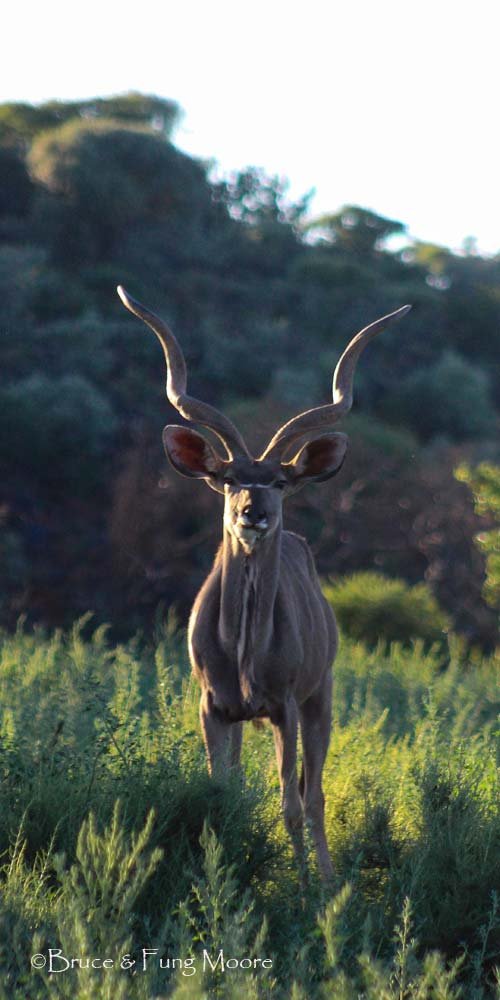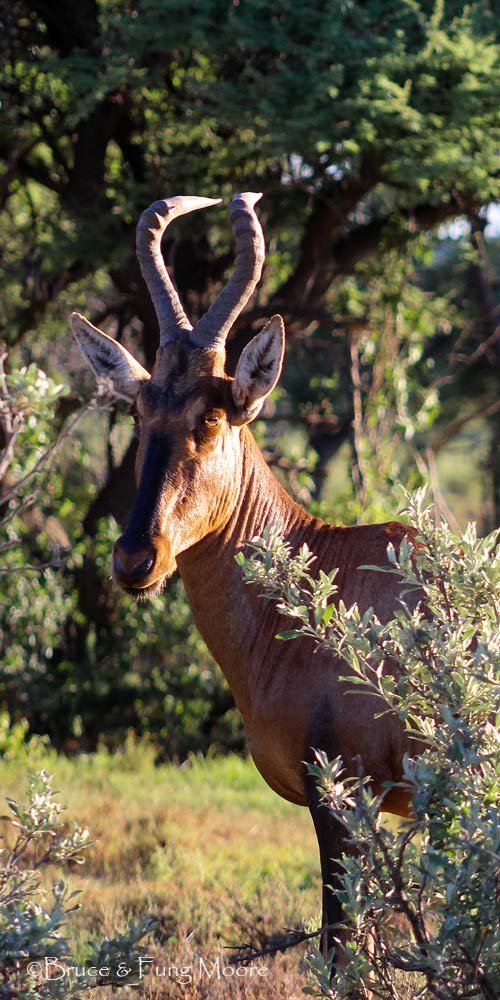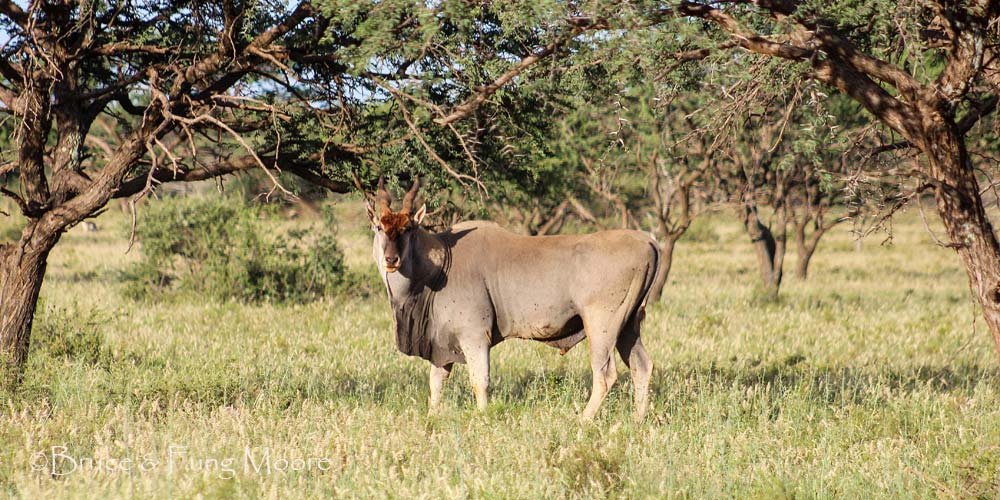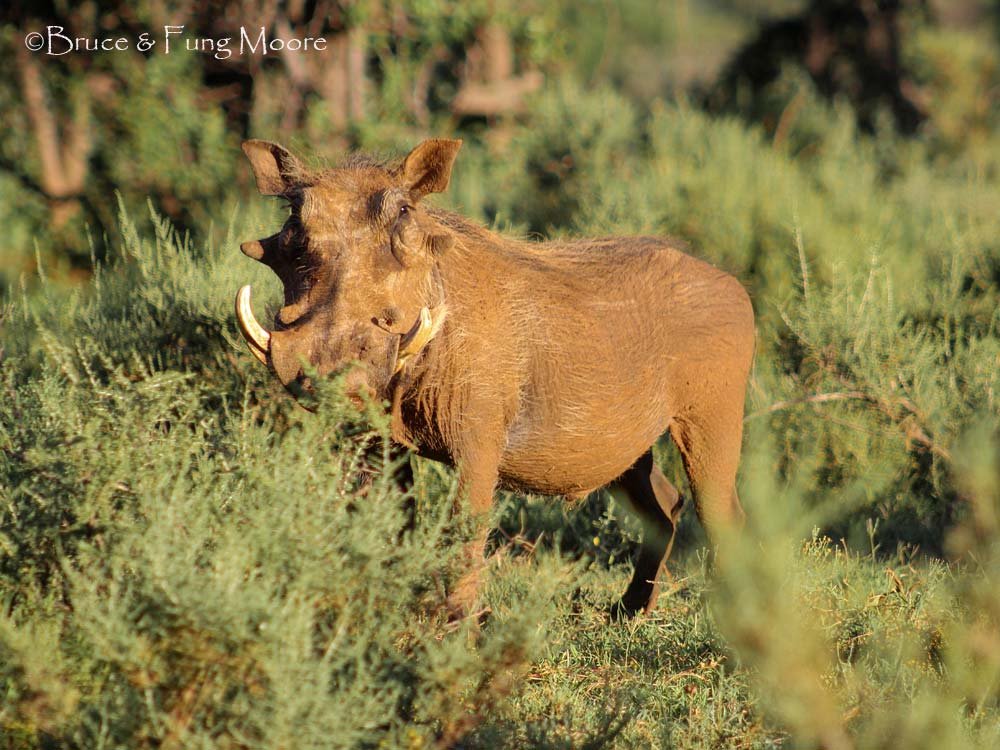MOKALA: THE BEST NATIONAL PARK IN SOUTH AFRICA THAT YOU NEVER HEARD OF
Named after the iconic camel thorn tree that dots the landscape of the region, Mokala National Park is advertised as “Where Endangered Species Roam”. The newest National Park in the country (2007), it is used as a breeding area from which various species are annually collected and moved to other national parks as well as sold to raise funds.
Mokala guarantees sightings of ungulates that are rarely spotted in other parks. Roan and sable antelope, livingston eland, tsessebe, mountain reedbuck and black wildebeest can be found here. It has the highest density we’ve encountered of greater kudu, which is a photographic favourite of ours. There are plenty of red hartebeest, blue wildebeest, gemsbok, steenbok as well as both springbok and impala (which is something we’ve never seen before since their natural territories do not overlap). There are giraffe, buffalo and both black and white rhino, but no elephants and no predators bigger than jackals. Even the hyena were all moved out. So this is not a Big Five park, which is a large reason why it is so often overlooked. And that is also a big reason why Mokala is the best National Park in South Africa that you never heard of.
Far top: a herd of quagga enjoying a morning drink at the waterhole and salt lick right in front of our bungalow. Clockwise from above: A magnificent kudu bull at dusk inside the Mosu Lodge grounds, a fiery Mokala sunset with the iconic camelthorn tree foreground, and a trio of female kudu, part of a herd blending in on a dolomite hill.
SO MUCH TO LOVE
Yes, we loved this place. It sits in a transition zone between the Karoo and the Kalahari, so there is a wider variety of birdlife, vegetation and terrain than you would find in most parks. There are open rolling grasslands in the north and rocky dolomite hills to the south interspersed with plains.
Animals are plentiful and easy to find with great scenery as well. It often seems that you have the 30,000+ hectares all to yourself. On our first morning game drive, we did not encounter another car until we’d been out for 2.5 hours.
left to right: A kudu at dawn, a quagga near our bungalow and a red hartebeest.
QUAGGA! (ALMOST) BACK FROM EXTINCTION
We were pleasantly surprised to find three herds from the Quagga Project. Quagga were a sub-species of the plains zebra that were native to southern Africa, but killed off in the 1880’s to preserve grazing land for settlers. The Quagga Project, based out of Cape Town University, used DNA from pelts along with selective breeding to bring the species back into existence using zebra as surrogates. The brown shading has been showing more with successive generations along with reduced striping. With their white bum and back legs, they were easy to identify. We could re-find them every day since they were territorial, with one herd using the watering hole in front of our cottage.
Clockwise from top left: some of the quagga (notice the lack of stripes in the lower areas), a sand road scene in the central koppiveld, a bull eland, a resting roan antelope lying in the bush, a bull kudu guarding his territory (we’d see him every day in virtually the same spot), and a bat-eared fox.
AMAZING MOKALA SUNSETS
Before staying at Mokala, we read online and was told by a friend that the sunsets in the area were consistently amazing. We’ve seen great sunsets all over and are not easily impressed. But we must testify that the four nights we were there, we enjoyed a stunning sunset each and every night.

WHERE TO STAY IN MOKALA
We rated the Family Cottage at Mosu Lodge as the best accommodation we have ever had in any South African National Park. Spacious, with a full kitchen along with the obligatory braai (BBQ) out front, the waterhole seemed to be for us alone, with only one other unit a bit behind and to our side that could directly see the waterhole. The other units would see game coming and going. Mosu Lodge has won awards from SANParks (South Africa National Parks) as their Best Restaurant and Best Front Office; we found everything ran smoothly and the food was delicious. We saw kudu and hartebeest within the grounds since the only barrier was knee-high electric wire designed to keep only buffalo and rhinos out. Our favourite kudu photo (at the top of the page) was taken on foot just up the hill beside the front office at dusk! The only small gripe we had was that you must park away from your unit in a common parking lot. They supplied a big trolley to move bags, but it took some effort. The welcome result was that the camp was quiet, with no car noise to distract from the peace and quiet.
A pair of roan antelope fighting over a block of salt at the waterhole in front of our bungalow. There was a second block nearby, but they both seemed to really want this one, living up to their belligerent reputation (top left). A solitary gemsbok on the northern plains (top right). A nicely backlit kudu male in the morning light (bottom left). With no predators, warthogs were common.
Have you ever wished to stay in a treehouse, alone in the African bush? In Mokala you can fulfill this dream. The treehouse is called the Kameeldoring Treetop chalet. There is also a rustic house beside a waterhole (Haak en Steek Camp) and a camping site (Motswedi Camping Site), along with a building set up for conferences and large family gatherings (the farm-style Mofele Environmental Centre). The other proper lodge was at the opposite end of the park. Lilydale Rest Camp overlooks a river which forms the northern boundary of the park, but don’t expect to see any wildlife along the river as the other side is a private farm. To compensate, Lilydale is on the edge of the scenic rolling grasslands that make the northern end of the park so attractive to visit.
Bookings can easily made on the SANParks website.
Sadly, since our visit, both Lilydale and Mosu have closed their restaurants, probably because of a lack of guests. All the units have kitchens with everything you need to cook and eat. We noticed that most South Africans come well-supplied and cook most of their own meals in the parks. Since most of the clientele are South Africans, the restaurants don’t get much business. Take note: only some basic necessities are sold in the shop at Mosu Lodge and there is no fuel station in the park, so you must come prepared. But once settled into your accomodation, you’ll find well-equipped self-catering facilities covering your needs.
Two of the most attractive african antelope species: sable (left) and nyala (right). These photos were actually taken within meters of the park entrance, but across the road in a private game ranch.
MOKALA IS A GREAT STOPOVER
Mokala is centrally located, making it an ideal stopover for trips across the country. It is located around 70 km south of Kimberley, just west of the main Cape Town – Johannesburg highway (N12), with two approach roads (one for Mosu in the south and one for Lilydale in the north). We used the southern approach road and along the way passed a number of game ranches, spotting quite a few sable, eland, nyala and springbok (including both albino and melanistic springbok varieties).
We spent four nights at Mosu Lodge as a stopover between Kgalagadi (KTP) and Golden Gate National Park in the Drakensberg Mountains. It would also serve well (along with Karoo N.P.) as a stop between Cape Town and Johannesburg.
We can understand Kruger N.P. and KTP being the top wildlife destinations in South Africa, for good reason. But Mokala is truly a gem and worthy of more attention than it seems to be getting. Perhaps the South Africans wish to keep this one to themselves.



































 Visit Today : 23
Visit Today : 23 This Month : 1200
This Month : 1200 This Year : 7622
This Year : 7622 Total Visit :
Total Visit :